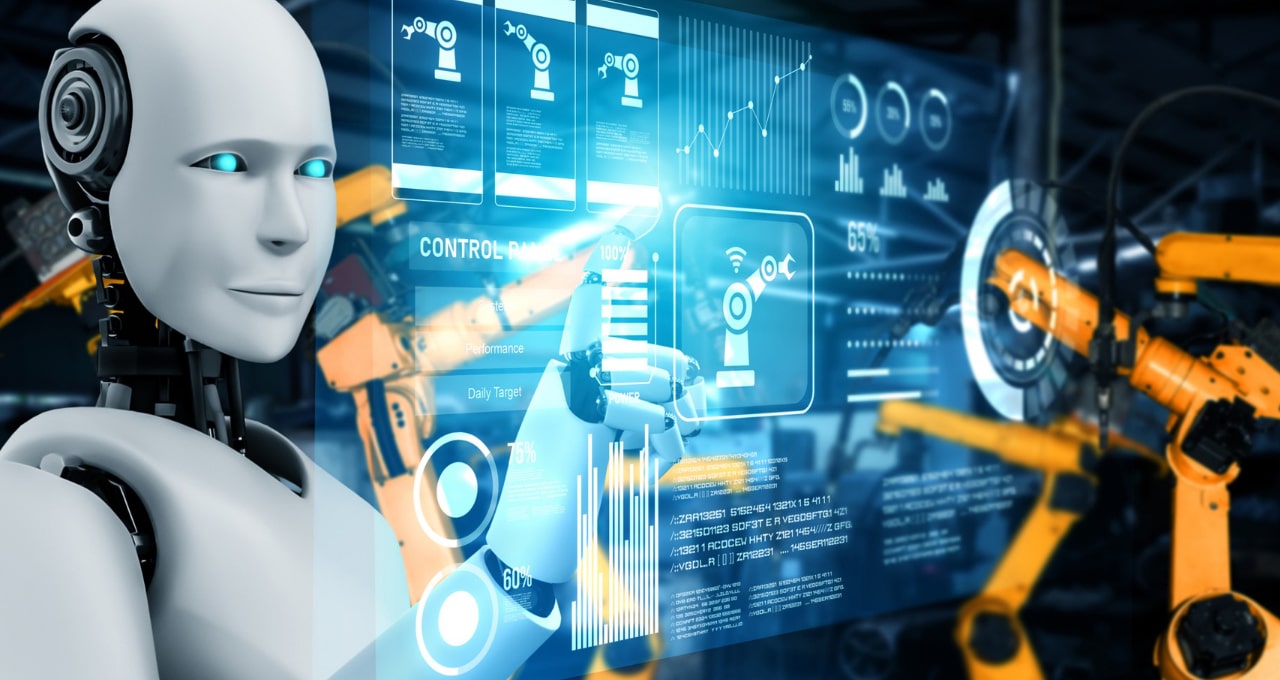2022 is the year of automation. As the post-pandemic era demands every business to have tech-enabled business processes, the significance of automation is increasing like never before.
A recent survey of engineering and IT leaders indicated:
For businesses to thrive and survive, Robotic Process Automation tools and Artificial Intelligence solutions have become increasingly important.
74%
of respondents consider automation to help their employees work with better efficiency
59%
reported cost reductions of up to 30% when teams have embraced automation.
95%
of respondents prioritize business process automation
In 2020, the COVID-19 pandemic has forced businesses to rapidly adopt automation processes and digitization is cemented forever into the global business landscape.
Now, 2022 is all set to leverage the true benefits of robotic process automation technology. Here is the list of top RPA trends that will rule this year.
Intelligent Automation (IA)
Intelligent Automation is one of the hottest trends in the world of Robotic Process Automation (RPA). The term refers to a mix of technologies, including Artificial Intelligence, Machine Learning, low-code development tools, and RPA. Businesses are rapidly adopting this combination to broaden the scope of process automation with advanced cognitive technologies. Today, cognitive robots have become an essential member of the hybrid workforce because they learn constantly from data and make informed decisions.
For example, insurance companies are commonly using RPA for automating the business processes but using intelligent automation allows them to fast-track many other processes. While using image recognition, RPA can access the claim approval and processing details without minimal human intervention.
Safety and Security
Security has become a key priority with the extended utilization of RPA in business operations. Whether it is to ensure confidentiality in healthcare organizations or to protect crucial data from hackers, the security architecture surrounding the operations will have the highest industry-specific criteria.
For example, financial institutions can gather information about transactions of users from different sources, process the information to conduct predictive analysis. It allows businesses to track potential fraudulent transactions and notify the relevant authorities. RPA will be actively used in online shopping, financial transactions, the processing of insurance claims, and a wide variety of industries.
Robotic Jobs
There is a common notion that RPA will take away many jobs in the coming years. Yes, automation will indeed impact jobs over time. However, it will only impact the jobs and not take them away. Robotic process automation solutions can master the rule-based tasks of data processing but it will require creativity, critical thinking, and innovation. And for these skills, organizations will need employees. With the rising adoption of RPA in companies, it is vital to clear the air on employee fears. In the age of Siri and Alexa, there is no debate on the directions of the service world. The chatbots, voice recognition solutions, and virtual assistants have certainly raised the bars on service levels.
For example, a customer seeking a loan interest rate or an insurance premium can be calculated by the machine and can be automated easily. The machine directly requests information via the user interface, connects to the administration system, and provides the answer instantly.
Ascent of Hyper automation
Hyper automation continues to march up the hill as organizations are looking to automate end-to-end business processes for greater quality, cost savings, and return on investment. A Gartner study indicated that the global spending on automation technologies is set to reach $596.6 billion in 2022. With a faster and smarter version of RPA, hyper-automation is all set to automate complex tasks, process massive volumes of data across multiple areas.
Most of the enterprises that deployed RPA are seeking to adopt machine learning, artificial intelligence, and natural language processing to their automation processes in 2022 to learn patterns, and interpret hidden business insights.
Automation Fabric to Fuel Innovation
According to Forrester, 5% of Fortune 500 companies will utilize automation technologies to power extreme innovation. It is a myth that robotic process automation can only be used to fast automate routine business processes. In 2022, RPA will drive more innovations with powerful automation programs.
The usage of automation fabric helps in designing and executing the combined workforce of human and digital workers. This framework will combine the traditional and AI-based components to support the innovation programs.
Faster Adoption of RPA in SMEs
In a global poll of CEOs by Deloitte, over 73% of respondents stated that they are on the road to intelligent automation. Robotic process automation is not only for large enterprises but it has become a core business requirement for small and medium businesses (SMEs) in 2022 and beyond. SMEs have also understood the need for process automation to remain competitive in the industry. Small businesses will continue to use RPA solutions at a faster rate in the coming years to streamline their process and achieve better efficiency.
Get started with RPA with us today
Considering the current trends and forecasts, 2022 could be a real game-changer for businesses with the new capabilities of RPA. Get in touch with our RPA experts to consult your business requirements and solidify your position with a tailored robotic process automation solution.
In recent years, Robotic Process Automation tools and Artificial Intelligence solutions have become very important for businesses to survive and thrive. RPA has all the potential to take your business to new heights in the post-pandemic times and beyond. Stay connected with us https://stage.ignatiuz.com/.
